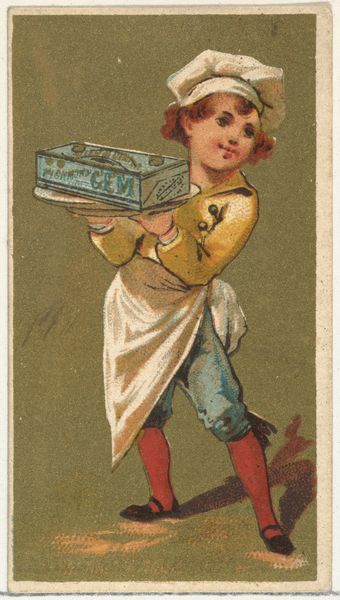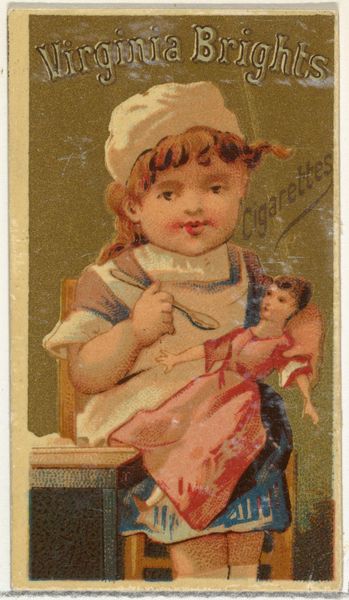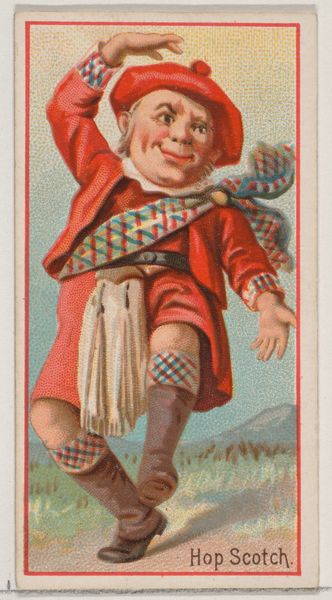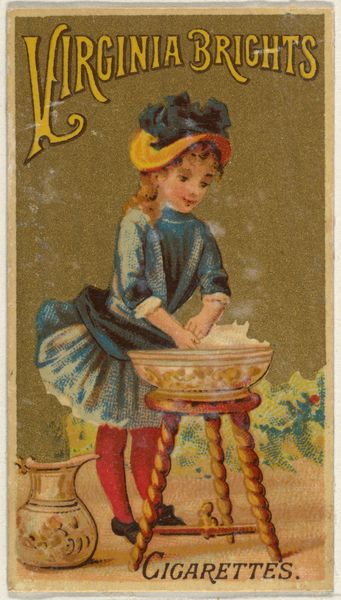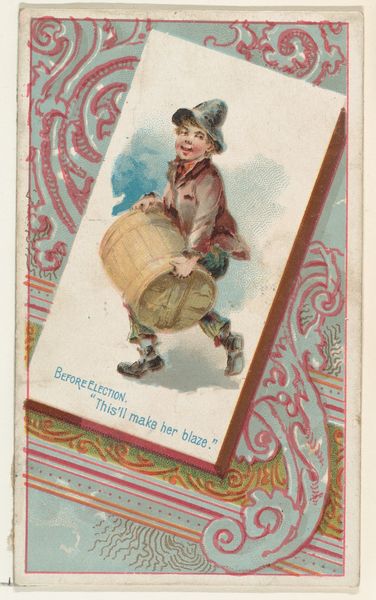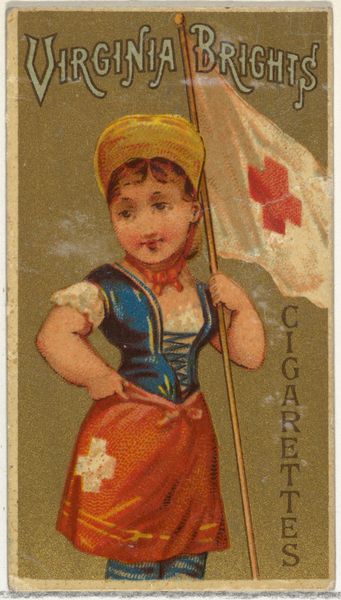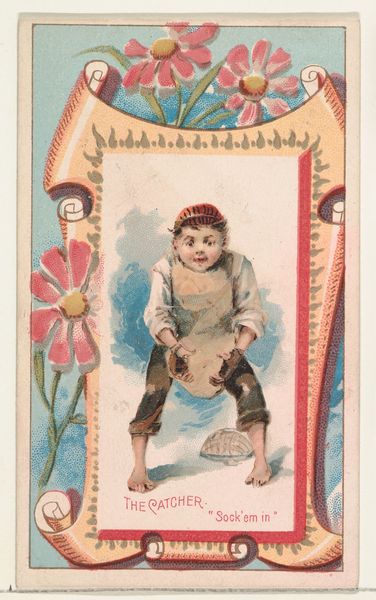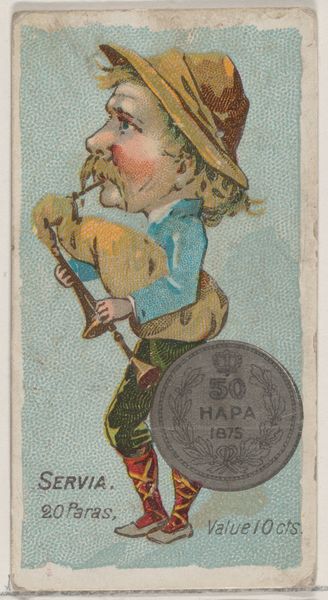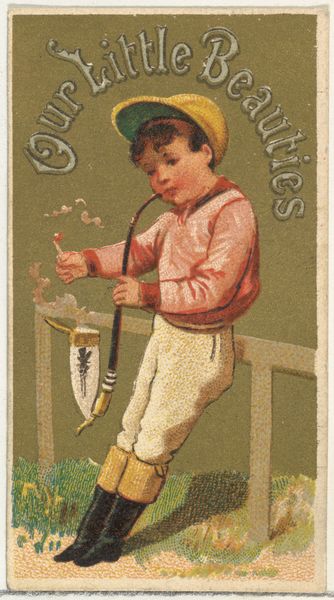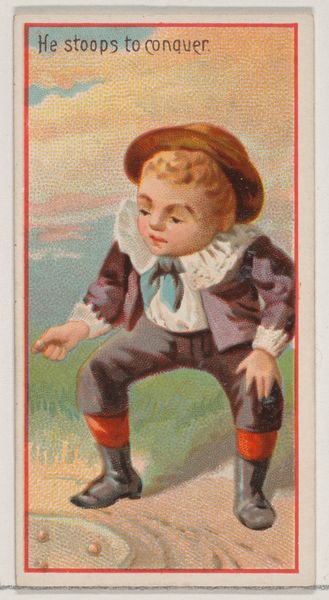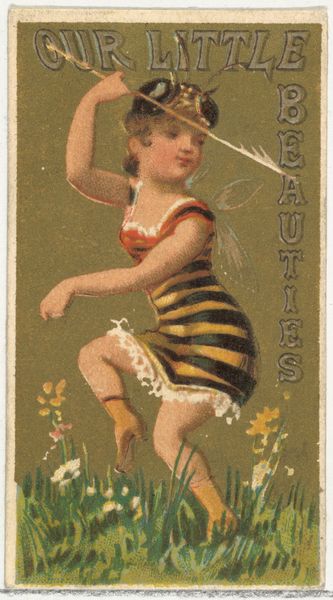
From the Girls and Children series (N65) promoting Richmond Straight Cut Cigarettes for Allen & Ginter brand tobacco products 1884 - 1891
0:00
0:00
drawing, coloured-pencil, print, watercolor
#
drawing
#
coloured-pencil
# print
#
watercolor
#
coloured pencil
Dimensions: Sheet: 2 5/8 × 1 1/2 in. (6.7 × 3.8 cm)
Copyright: Public Domain
Editor: So this image, made between 1884 and 1891, is titled "From the Girls and Children series (N65) promoting Richmond Straight Cut Cigarettes." It’s a small print, a commercial piece really, using colored pencils and watercolor, created to advertise Allen & Ginter tobacco. What strikes me is the unsettling mix of childhood innocence and commercial intention. What stands out to you? Curator: Well, at first glance, the child-musician with the panpipes and drum appears straightforwardly celebratory. But look closer – isn't it jarring? The child embodies a tradition of street performers, a figure of joyous, even rambunctious noise. But consider what's being promoted: cigarettes. What happens when we read "STRAIGHT CUTS ARE THE BEST" through the guise of childish expression? Is that a celebration, or something darker? Editor: Darker, definitely! There's a sense of manipulation there, almost like an exploitation of the visual language of joy for capitalist gain. I’d not thought of that! Curator: Exactly. The jester’s crown is less playful now. More pointed. How does the semiotics of tobacco, in this era, affect what our child symbolizes? Editor: Good point! It changes everything. What at first appeared like pure play is really carefully coded messaging linking a product with innocence and merriment, which feels deceptive when you spell it out. Curator: This period in the United States loved allegorical painting, children representing grand things about nation and culture. Children and commerce had overlapping cultural values for a brief time. Did something change over the next few decades in our ethical understanding of visual communications? How does this card function today? What remains? Editor: Seeing this now, in the context of today's ad awareness, definitely triggers a sense of discomfort. Thank you for pointing out that strange but also thought-provoking interplay. It certainly feels important when reflecting on marketing even today.
Comments
No comments
Be the first to comment and join the conversation on the ultimate creative platform.
